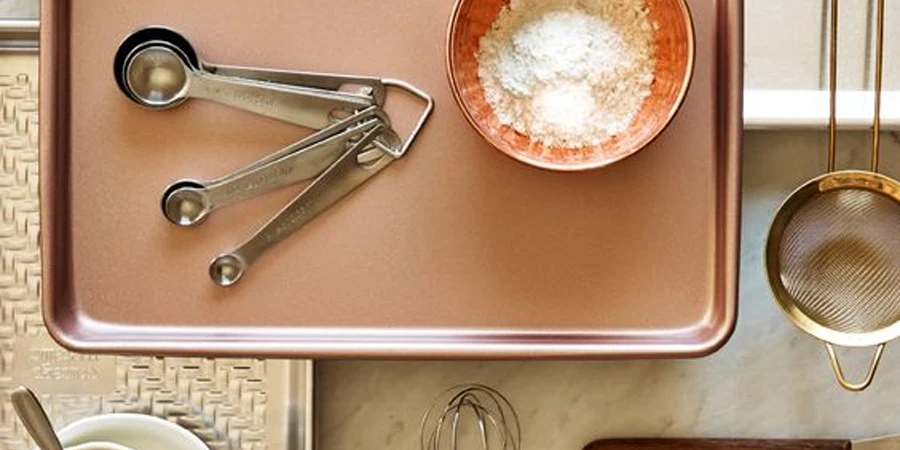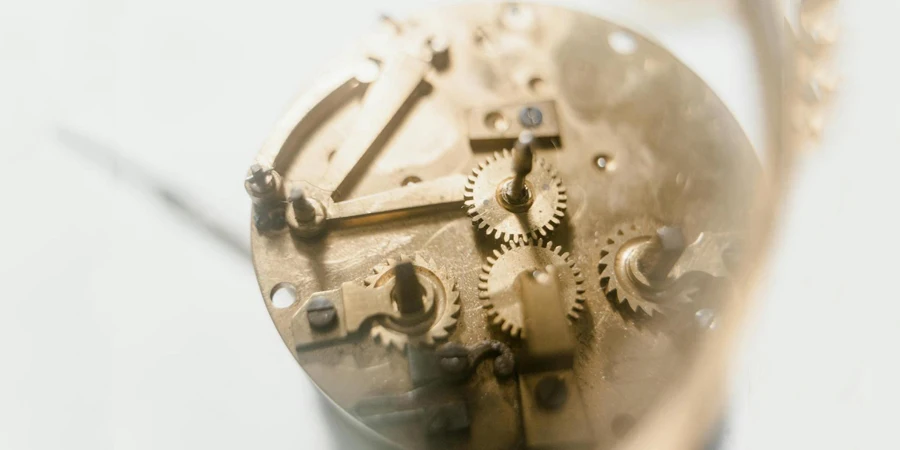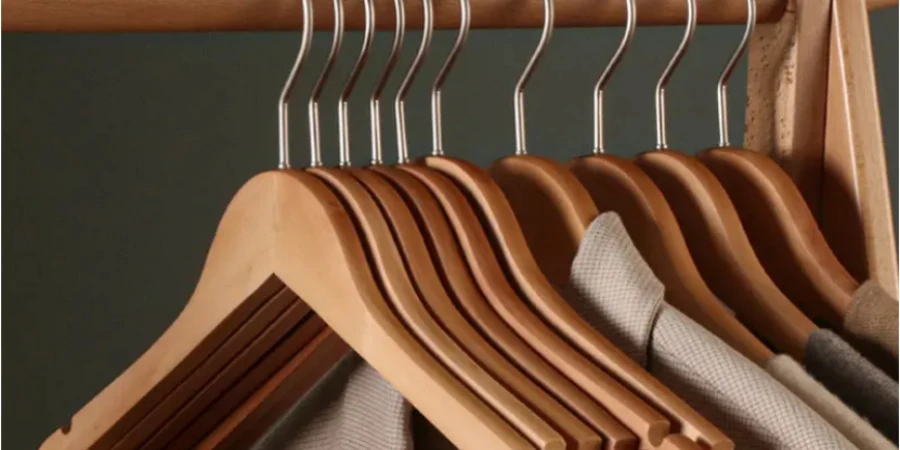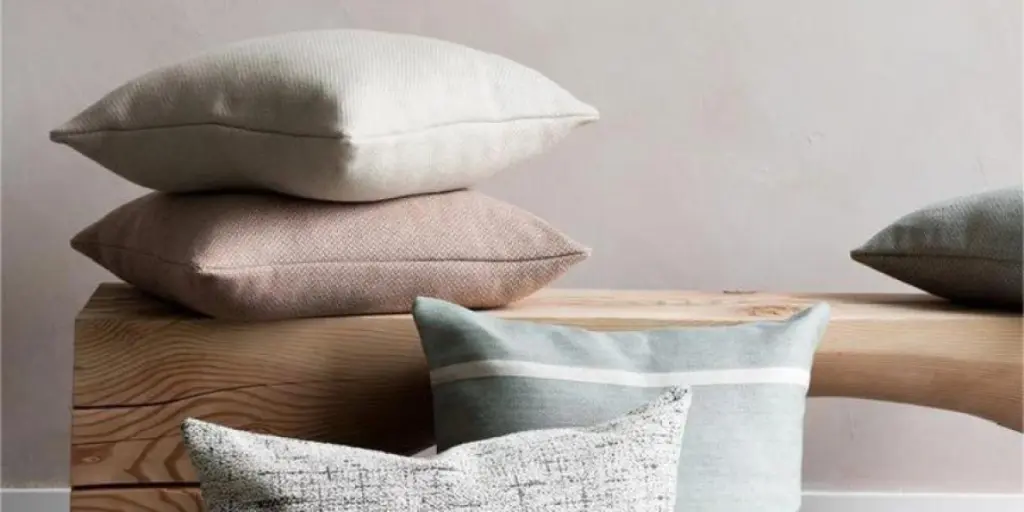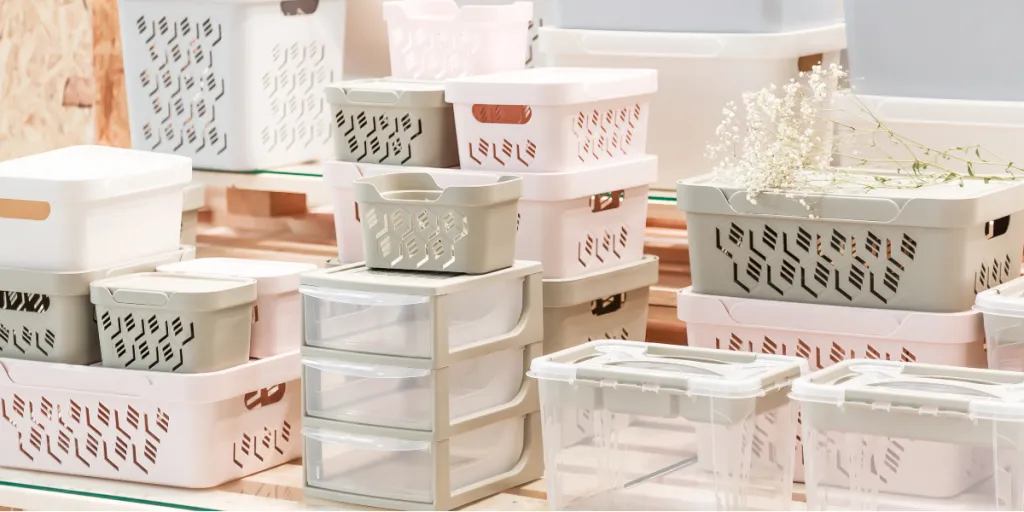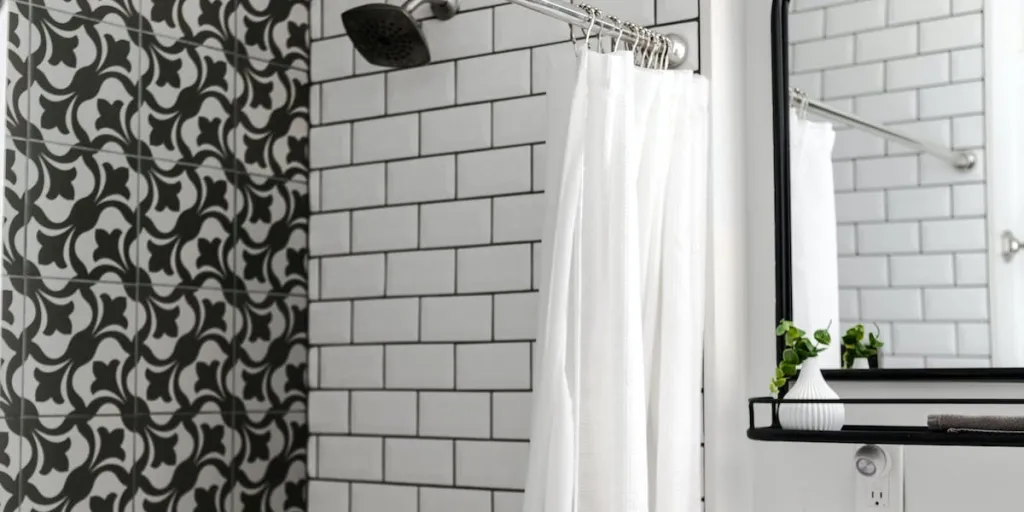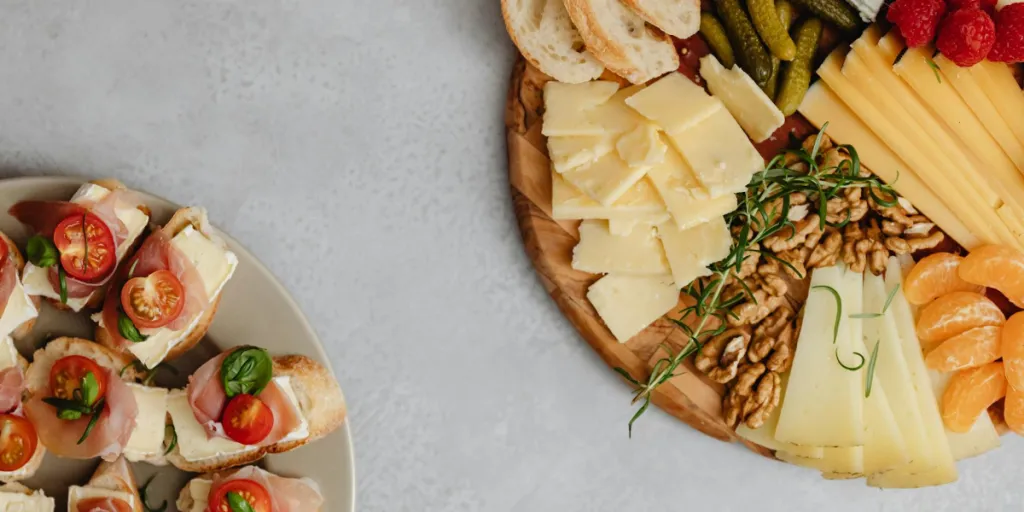Selecting the right baking pans is crucial for ensuring culinary success, especially when considering the variety of baked goods that businesses aim to produce efficiently and consistently. Baking pans, crafted from various materials like steel, aluminum, and silicone, offer distinct advantages in heat distribution and durability, impacting the quality of everything from artisan breads to gourmet pastries. As baking technology advances, understanding these tools’ functional diversity becomes essential. This ensures that each product not only meets the high standards expected in today’s market but also enhances baking operations by improving product uniformity and reducing baking times, directly contributing to overall kitchen efficiency.
Table of Contents
1. Types and uses of baking pans
2. 2024 baking pan market insights
3. Criteria for choosing the best baking pans
4. Leading baking pan models and features
1. Types and uses of baking pans
The array of baking pans available today reflects a broad spectrum of functionality necessary for a diverse range of baking operations. From delicate pastries to hearty roasts, the choice of pan can greatly influence the outcome of the culinary process.
Variety and functionality: from muffin tins to roasting pans
Muffin tins, sheet pans, loaf pans, and roasting pans comprise the essential toolkit for any baking enthusiast or professional. Muffin tins are crucial for cupcake and muffin production, typically featuring 6 to 24 cups in a single pan and crafted from materials that promote even heat distribution. Sheet pans are versatile, used for everything from baking cookies to roasting vegetables. Their flat surface and shallow edges allow for easy baking and browning. Loaf pans, designed for breads and cakes, come in various sizes to accommodate different recipes and yield perfectly shaped products. Roasting pans are heavier and deeper, designed to accommodate large cuts of meat or poultry, often coming with racks to elevate the meat for even cooking.
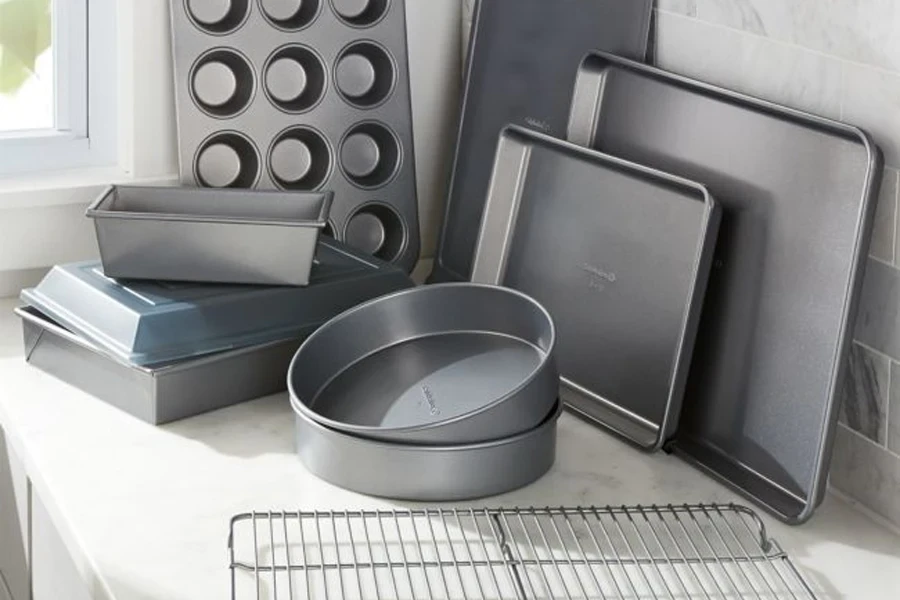
Material matters: analyzing steel, aluminum, and silicone options
The material of a baking pan dictates its heat conductivity, longevity, and reactivity with foods. Steel pans, known for their durability and strength, are favored in commercial kitchens for their ability to withstand high temperatures and heavy usage. Aluminum pans heat quickly and evenly, making them ideal for cakes and pastries that require uniform baking. However, they can react with acidic ingredients, causing discoloration and potentially affecting flavor. Silicone pans offer non-stick properties and flexibility for easy removal of goods, but they may lack the structural strength needed for heavier batters and do not brown as well as metal pans.
The global market reflects a growing preference for non-stick metal and silicone baking pans, as they reduce the need for additional greasing and simplify cleanup. The push towards environmentally friendly and health-conscious baking practices also influences the materials chosen for baking pans, with manufacturers increasingly moving away from chemical coatings.
2. 2024 baking pan market insights
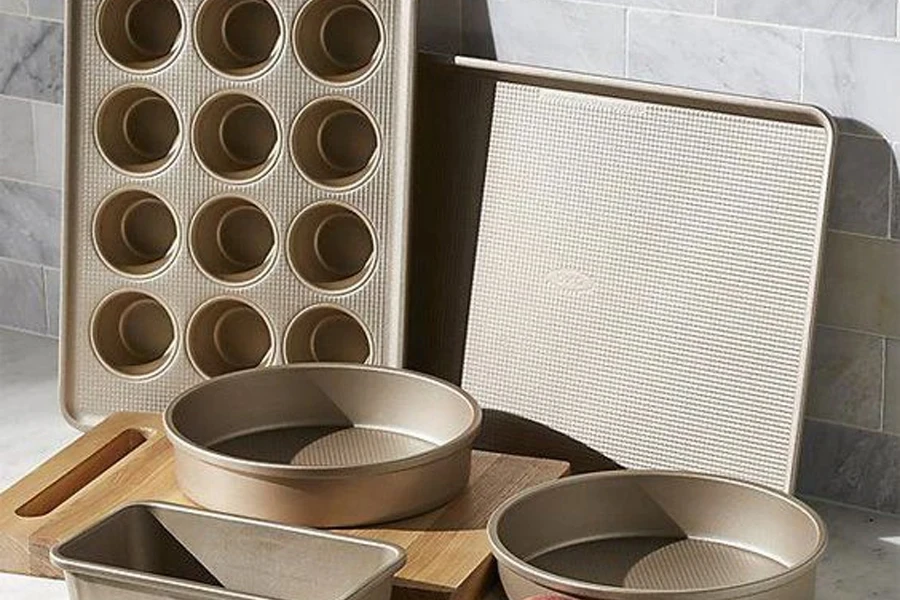
The baking pan market is witnessing significant shifts that will impact sales and consumer preferences in 2024, driven by evolving consumer demands and the ongoing adjustments within supply chains globally.
The global baking pans market is a sizable and growing industry, expected to reach USD 1.57 billion by 2030 at a CAGR of around 5.9%. Europe is the dominant regional market, while the household/consumer segment is the fastest-growing end-user category. The market is served by several major specialized manufacturers and suppliers of baking pans and bakeware products.
Current trends in baking pan sales and consumer preferences
In 2024, the baking pan market is characterized by a growing demand for versatile and eco-friendly products. Consumers are increasingly favoring items that promise durability and sustainability, not merely in terms of product life but also regarding the environmental impact of the materials used. This shift is partly driven by the broader consumer trend towards eco-conscious purchasing behaviors. Furthermore, there is a noticeable increase in the preference for silicone baking pans, which align with the modern push for non-toxic, non-stick, and heat-resistant options that simplify baking processes and cleanup. The variety in shapes and sizes to cater to specific baking needs—such as multi-compartment pans or those suitable for intricate baking designs—continues to expand, reflecting a market that values customization and precision.
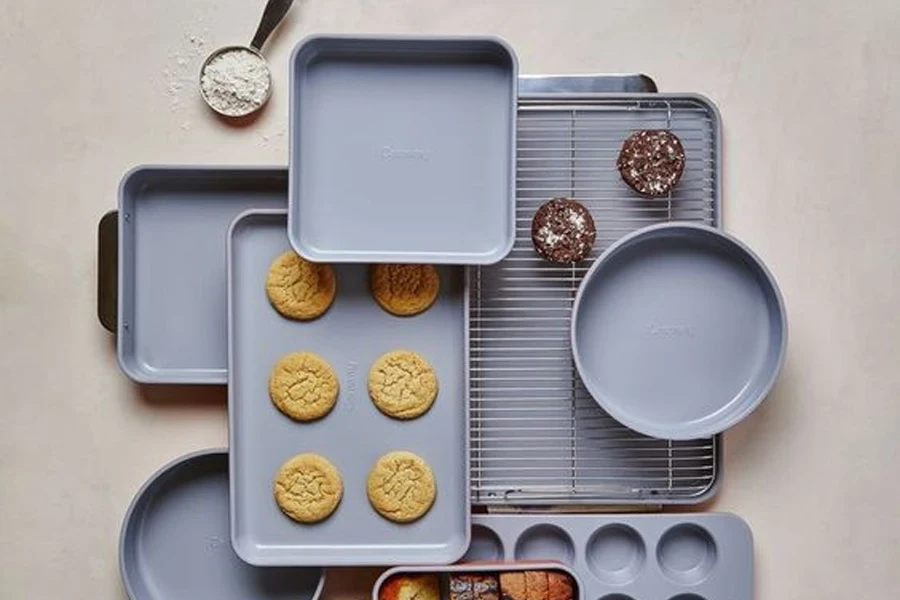
Analysis of supply chain factors affecting availability and price
Supply chain dynamics are notably influencing the availability and pricing of baking pans in 2024. The ongoing global economic adjustments and localized disruptions, such as those caused by lingering impacts of the COVID-19 pandemic, have affected raw material supplies, from metals like aluminum and steel to silicone. These disruptions lead to fluctuating costs in raw materials, which in turn impacts the final market price of baking pans. Manufacturers are also facing challenges in maintaining steady production levels due to the volatility in global trade and logistics, further complicated by the need to adhere to new environmental regulations. These factors are prompting companies to rethink their supply chain strategies, from diversifying their supplier base to investing in more robust logistical frameworks to handle disruptions more effectively.
Moreover, the market is seeing a trend towards the integration of technology in manufacturing processes to enhance product quality and efficiency. This technological adoption is not only aimed at improving the durability and functionality of baking pans but also at optimizing the production process to reduce costs and minimize environmental impact.
3. Criteria for choosing the best baking pans
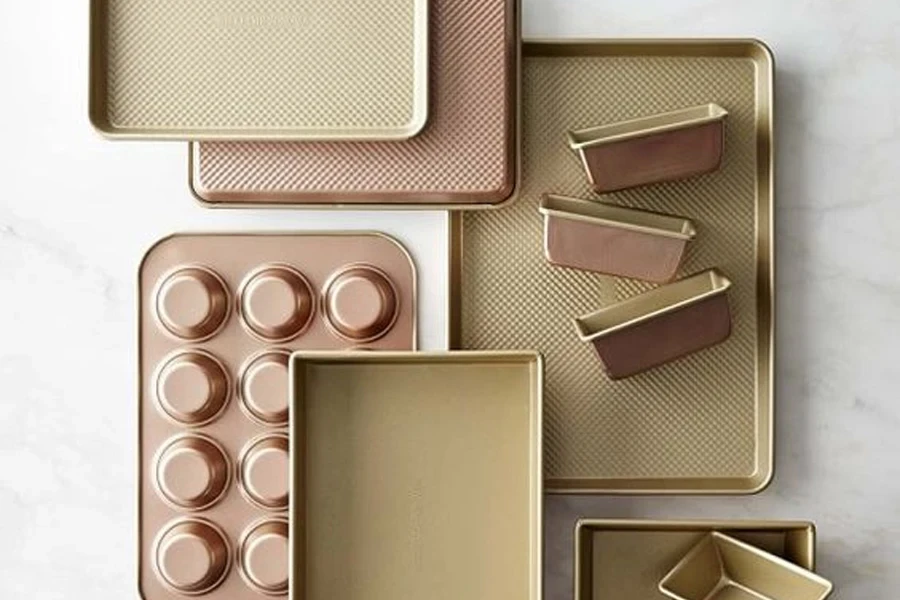
Selecting the right baking pans is essential for achieving desired results in baking operations. Factors such as material quality, size, shape, and performance features such as heat distribution and non-stick properties are crucial. These factors help ensure product integrity, baking efficiency, and ease of maintenance.
Assessing quality and durability: what to look for in build and material
The build and material of a baking pan directly influence its quality and durability. Stainless steel pans, known for their robustness, resist warping, denting, and scratching, and are preferred for their longevity and non-reactive nature, ensuring that the flavors of the baked goods remain unaltered. However, stainless steel’s poor heat conductivity can lead to uneven baking. Aluminum pans, on the other hand, are excellent heat conductors and promote even baking, but they may react with acidic foods, which could affect the dish’s flavor and appearance. Silicone pans provide a non-stick surface and are flexible, which makes demolding baked goods straightforward, yet they may lack the structural strength for heavier batters and do not brown the food as well as metal pans.
Size and shape considerations for diverse baking needs
The size and shape of baking pans should be chosen based on the specific baking requirements. For instance, a loaf pan is ideal for breads and cakes, while a wider, shallower pan is better suited for items like cookies and pastries that require more surface exposure. Round pans are typically used for cakes and deep-dish pizzas. The variety in size and shape allows for flexibility in baking, but it is important to consider how the shape of the pan can affect the cooking time and the final presentation of the baked product.
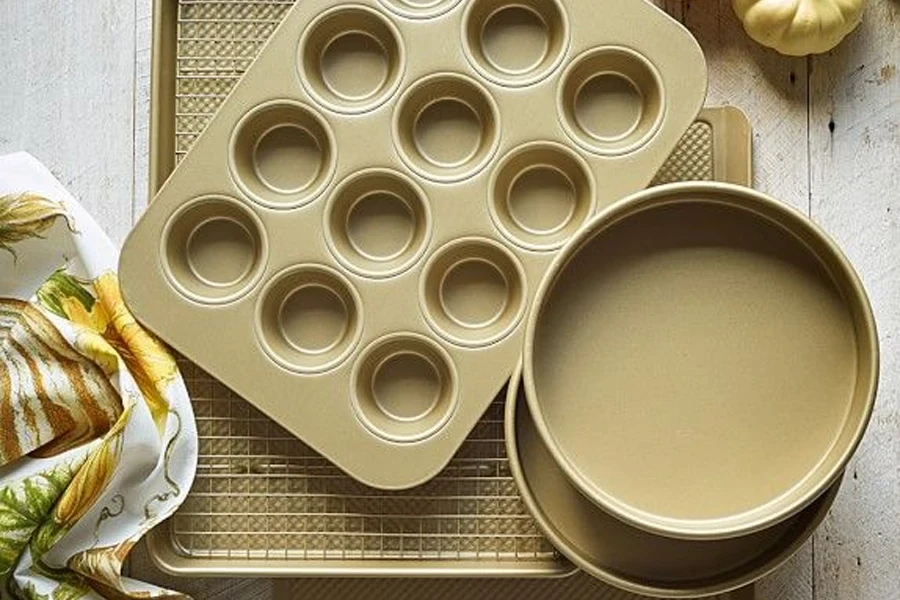
Performance features: heat distribution and non-stick properties
Heat distribution is a critical performance feature. Materials like aluminum and copper are preferred for their superior heat conductivity, which helps in achieving uniform cooking results. Non-stick coatings are another important feature, as they significantly reduce the need for greasing, making cleanup easier and helping to ensure that the baked goods can be removed from the pan without damage. It is vital to select pans with high-quality non-stick coatings that do not degrade at high temperatures and are free from chemicals that could leach into food.
4. Leading baking pan models and features
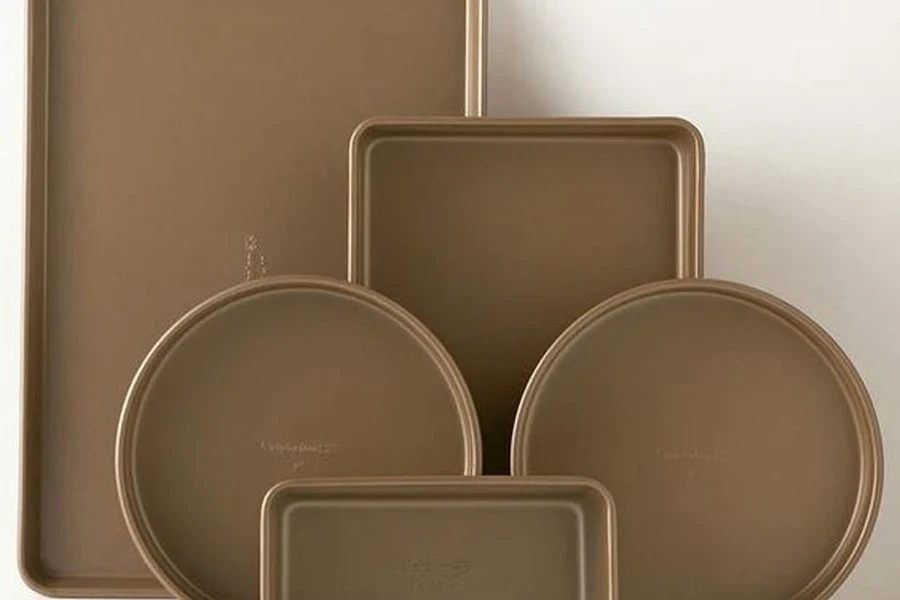
The baking pan industry continues to innovate, introducing models that meet the increasing demands for durability, efficiency, and versatility in baking applications. Here, we review top models for 2024 and analyze market leaders against emerging innovations in the sector.
Review of top models for 2024: performance and user feedback
In 2024, some of the standout models in the baking pan industry include those made by Nordic Ware, known for their Natural Aluminum Commercial Baker’s Half Sheets, acclaimed for their durability and even heat distribution. These pans are favored for their ability to achieve a uniform color on baked goods without overheating, which is crucial for professional baking outcomes. Another notable model is the USA Pan Bakeware Half-Sheet, which combines a ceramic coating with a unique ribbed surface, enhancing non-stick properties and air circulation for evenly baked products. User feedback highlights satisfaction with the non-stick functionality and the heavyweight construction that resists warping.
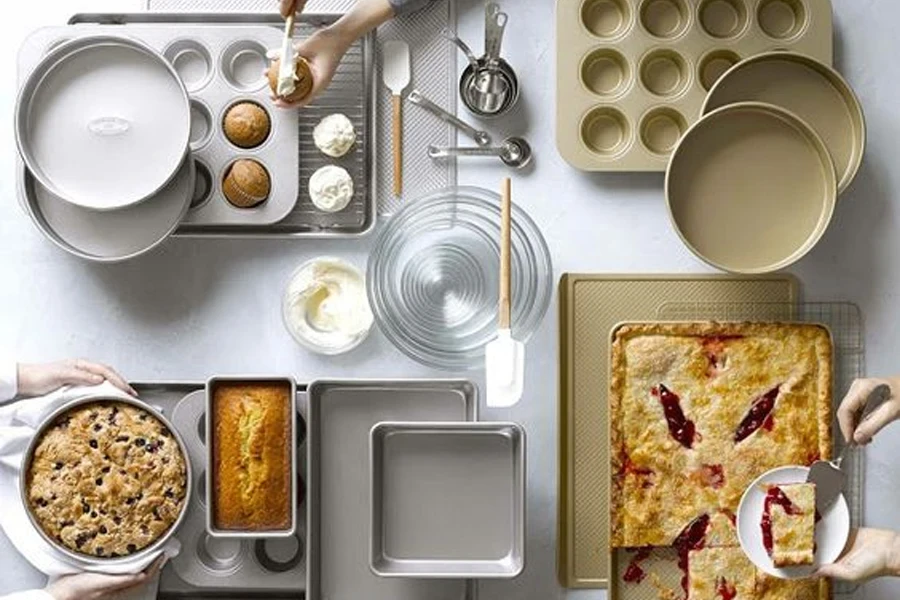
Comparative analysis of market leaders and emerging innovations
When comparing the market leaders with new innovations, there’s a clear trend towards eco-friendly and technologically advanced materials. For instance, the recent introduction of ceramic and silicone-based non-stick coatings represents a shift towards healthier cookware, free from PFOA and PTFE, chemicals commonly found in older non-stick coatings. These innovations not only improve consumer safety but also enhance the longevity and performance of the pans.
Emerging technologies include the development of heat-responsive pans that change color to indicate when they have reached the optimal baking temperature, an innovation aimed at reducing baking errors. Market leaders like Nordic Ware continue to invest in enhancing the thermal properties of their pans, while newcomers are introducing smart features, such as integrated temperature sensors that connect to mobile apps for precise cooking guidance.
The competitive landscape in 2024 shows a robust blend of tradition and technological advancement, with established players maintaining their edge through continual improvement of their product lines, while new entrants disrupt the market with smart, user-focused features. This dynamic ensures that the baking pan market remains both competitive and innovative, offering products that cater to the diverse needs of both professional bakers and home cooking enthusiasts.
Conclusion
The diverse range of baking pans available in 2024 provides a robust toolkit for culinary success, balancing tradition with innovation. From stainless steel’s durability to silicone’s flexibility, each material offers unique benefits to enhance baking efficiency and product quality. Innovations such as non-stick technologies and heat-responsive features cater to both professional and home bakers, ensuring the baking pan market remains dynamic and responsive to evolving consumer needs. As market leaders and new entrants drive forward with advanced features, selecting the right baking pans is crucial for optimizing baking outcomes in various culinary environments.
